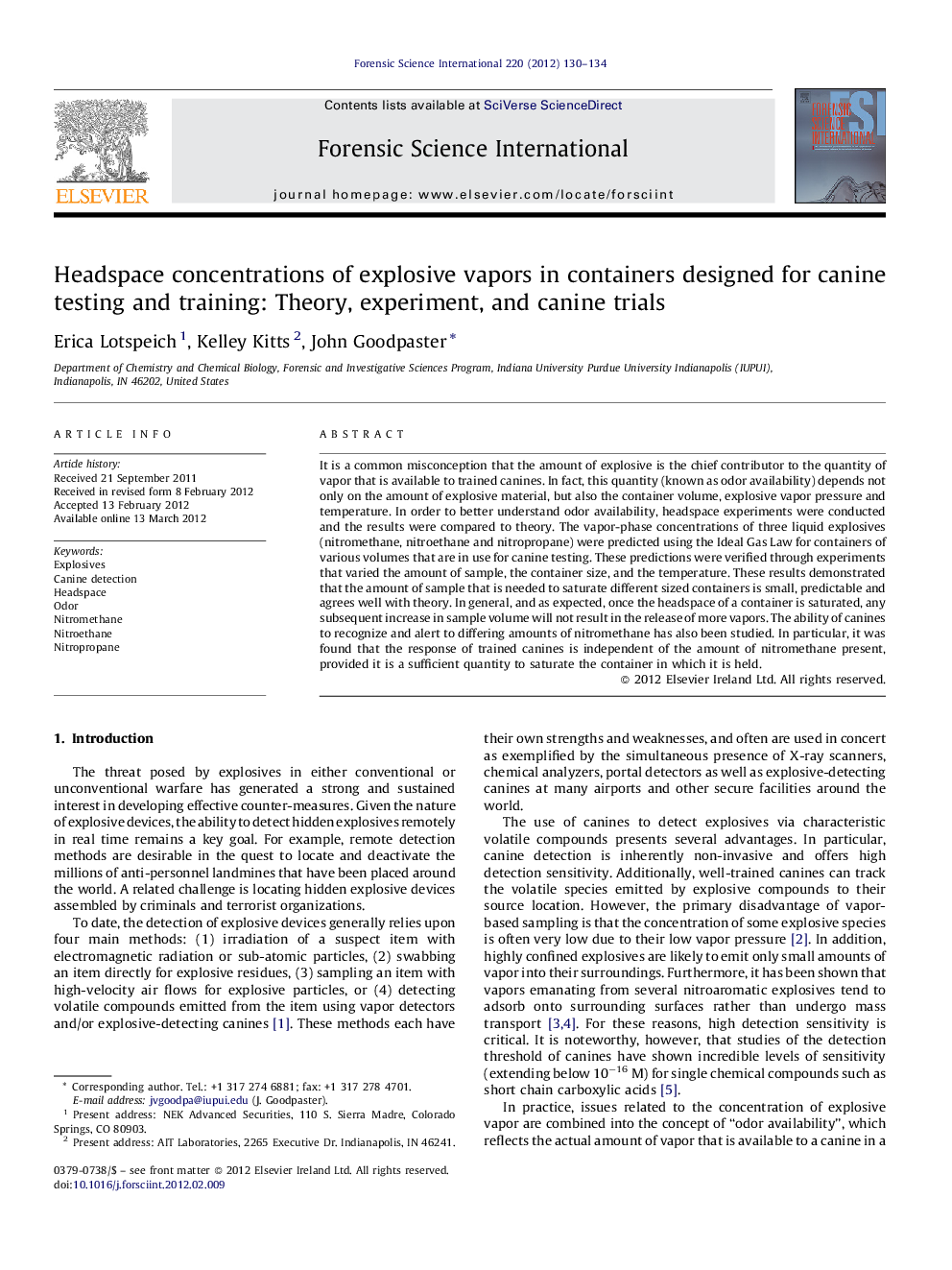| Article ID | Journal | Published Year | Pages | File Type |
|---|---|---|---|---|
| 6553002 | Forensic Science International | 2012 | 5 Pages |
Abstract
It is a common misconception that the amount of explosive is the chief contributor to the quantity of vapor that is available to trained canines. In fact, this quantity (known as odor availability) depends not only on the amount of explosive material, but also the container volume, explosive vapor pressure and temperature. In order to better understand odor availability, headspace experiments were conducted and the results were compared to theory. The vapor-phase concentrations of three liquid explosives (nitromethane, nitroethane and nitropropane) were predicted using the Ideal Gas Law for containers of various volumes that are in use for canine testing. These predictions were verified through experiments that varied the amount of sample, the container size, and the temperature. These results demonstrated that the amount of sample that is needed to saturate different sized containers is small, predictable and agrees well with theory. In general, and as expected, once the headspace of a container is saturated, any subsequent increase in sample volume will not result in the release of more vapors. The ability of canines to recognize and alert to differing amounts of nitromethane has also been studied. In particular, it was found that the response of trained canines is independent of the amount of nitromethane present, provided it is a sufficient quantity to saturate the container in which it is held.
Related Topics
Physical Sciences and Engineering
Chemistry
Analytical Chemistry
Authors
Erica Lotspeich, Kelley Kitts, John Goodpaster,
